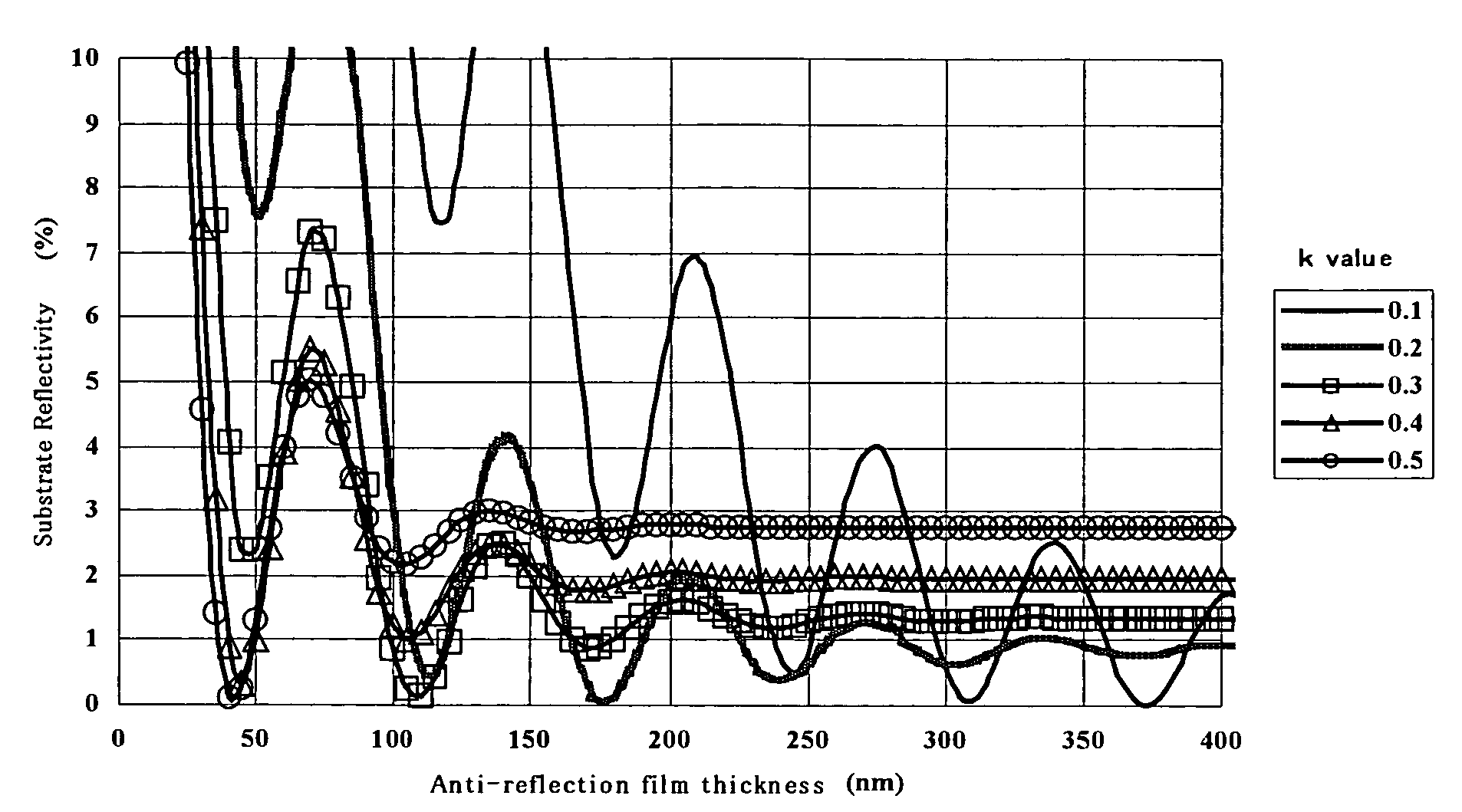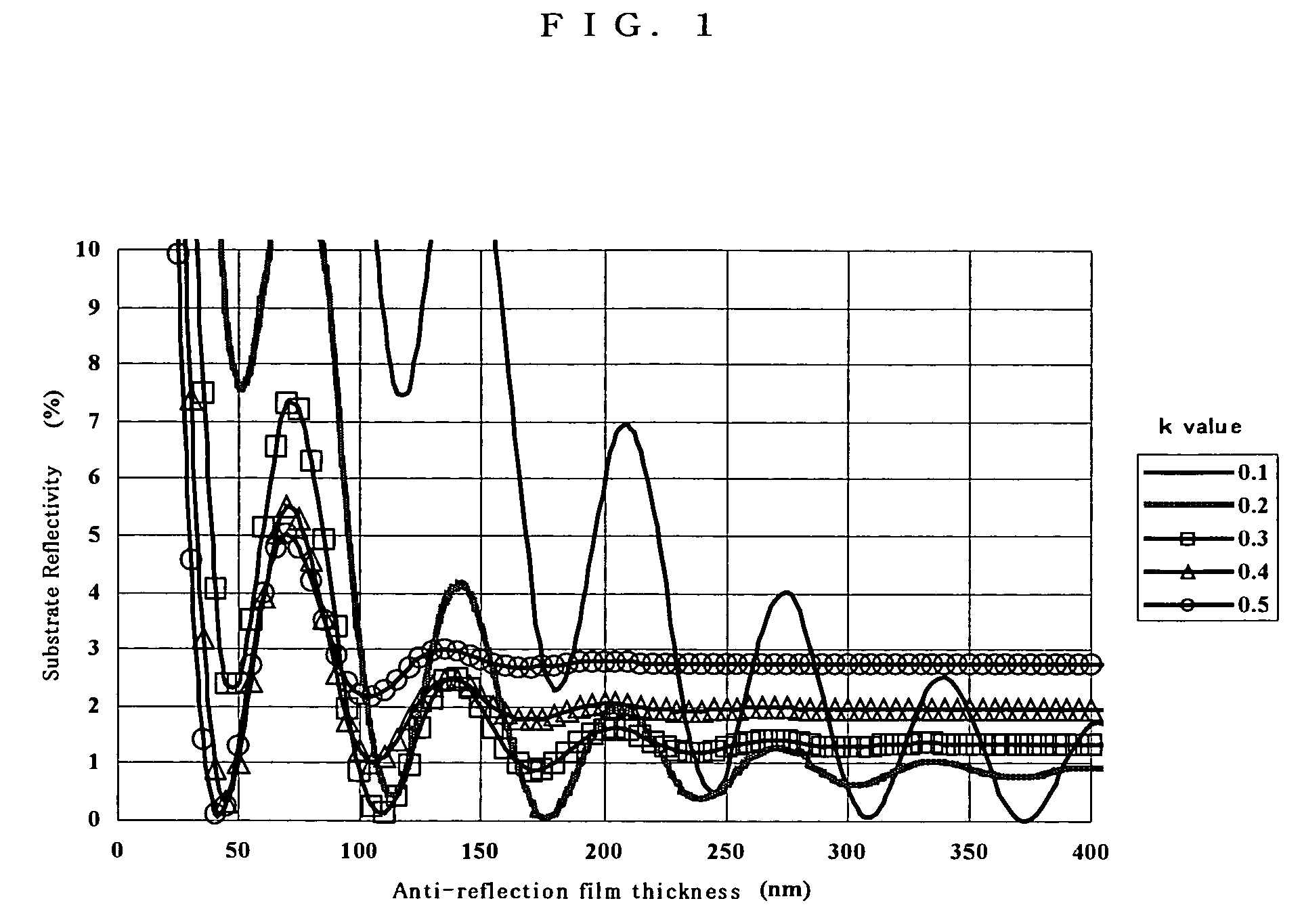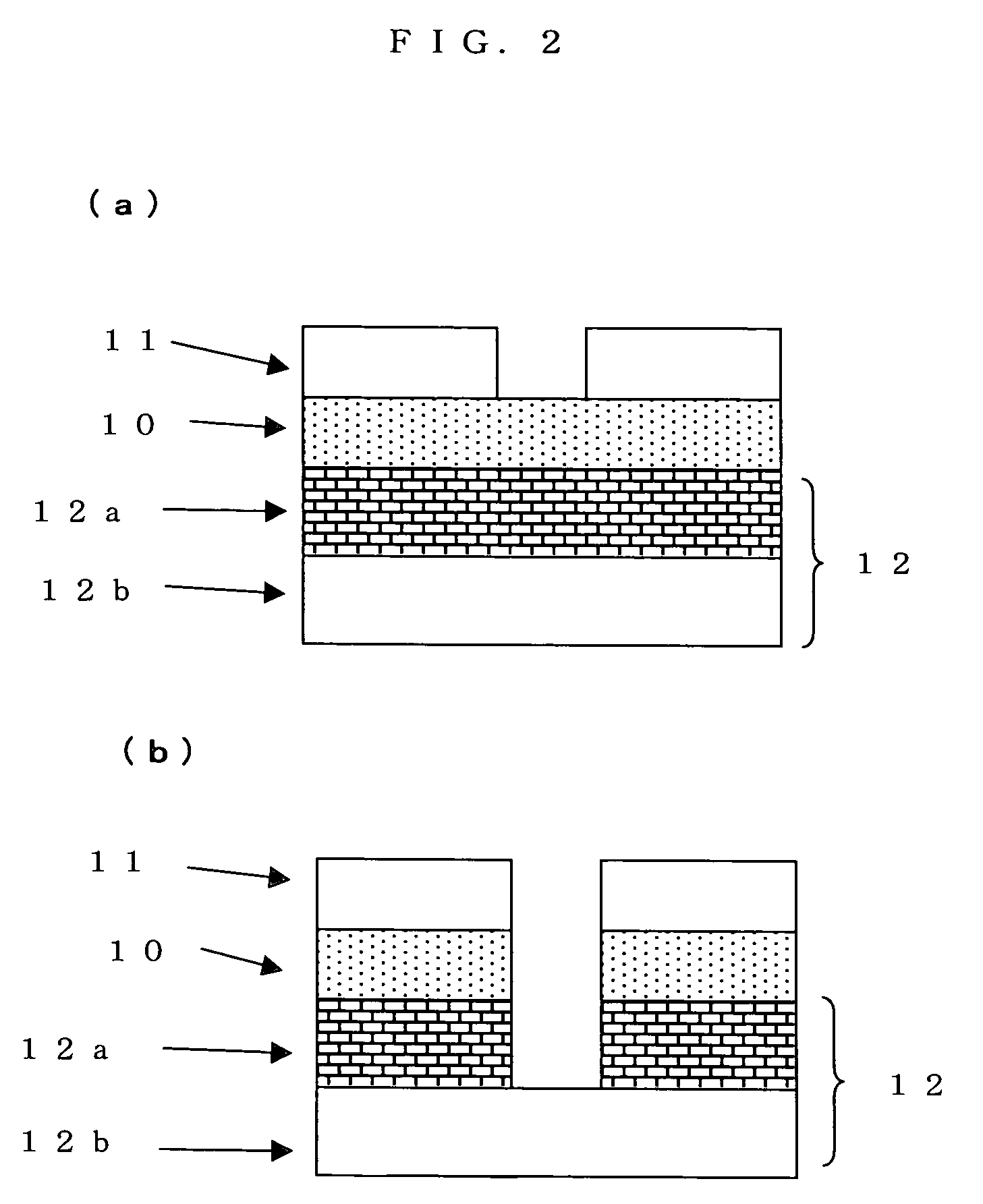Anti-reflection film material and a substrate having an anti-reflection film and a method for forming a pattern
a technology of anti-reflection film and substrate, which is applied in the field of anti-reflection film material, can solve the problems of resist pattern turning into a taper, pattern dimension variation, standing wave generation, etc., and achieves the effect of high processing efficiency, sufficient reflection prevention effect, and high accuracy
- Summary
- Abstract
- Description
- Claims
- Application Information
AI Technical Summary
Benefits of technology
Problems solved by technology
Method used
Image
Examples
preparation example 1
[0157]23.6 g of 3-glycidoxy propyl trimethoxy silane, 19.8 g of phenyl trimethoxy silane, and 22.3 g of 3-acetoxypropyltri methoxy silane were dissolved in 200 g of tetrahydrofuran (THF) and 100 g of pure water, and a liquid temperature was made into 35° C. Then, 21 g of 37% hydrochloric acid water was dropped over 1 hour, and then a temperature was raised to 64° C., to perform a condensation reaction of silanol, a ring-opening reaction of an epoxy group and an addition reaction of hydrochloric acid.
[0158]200 g of diethyl ether was added to the above-mentioned reaction mixture, and the water phase was separated from the organic phase. The organic phase was washed twice with ultrapure water, and then 200 g of propylene-glycol-monomethyl-ether acetate (PGMEA) was added thereto. THF and diethyl ether water were removed under the reduced pressure with heating a liquid temperature at 60° C., and thereby Polymer 1 shown below was obtained.
[0159]
[0160]The molecular weight (Mw) as converted...
preparation example 2
[0162]23.6 g of 3-glycidoxy propyl trimethoxy silane, 19.8 g of phenyl trimethoxy silane, and 22.3 g of 3-acetoxypropyl trimethoxy silane were dissolved in 200 g of tetrahydrofuran and 100 g of pure water, and a liquid temperature was made to 35° C. Then, 9.6 g of 70% nitric acid was dropped over 1 hour, and then the temperature was raised to 64° C., to perform a condensation reaction of silanol and a ring-opening reaction of an epoxy group.
[0163]200 g of diethyl ether was added to the above-mentioned reaction mixture, and the water phase was separated from the organic phase. The organic phase was washed twice with ultrapure water, and then 200 g of propylene-glycol-monomethyl-ether acetate (PGMEA) were added thereto. THF and diethyl ether water were removed under the reduced pressure with heating the liquid temperature at 60° C., and thereby the Polymer 2 shown below was obtained.
[0164]
[0165]The molecular weight (Mw) as converted to polystyrene was calculated by gel permeation chro...
preparation example 3
[0167]24.6 g of 2-(3,4-epoxy cyclohexyl)ethyl trimethoxy silane, 19.8 g of phenyl trimethoxy silane, and 17.2 g of 2-cyano ethyl trimethoxy silane were dissolved in 200 g of tetrahydrofuran and 100 g of pure water, and a liquid temperature was made to 35° C. Then 1.7 g of tetramethyl ammonium hydroxide was added, and then the temperature was raised to 60° C., to perform a condensation reaction of silanol.
[0168]200 g of diethyl ether was added to the above-mentioned reaction mixture, the water phase was separated from the organic phase. The organic phase was washed twice with 1% aqueous acetic acid and ultrapure water, and then 200 g of propylene-glycol-monomethyl-ether acetate (PGMEA) was added thereto. THF and diethyl ether water were removed under the reduced pressure with heating liquid temperature at 60° C., and thereby Polymer 3 shown below was obtained.
[0169]
[0170]The molecular weight (Mw) as converted to polystyrene was calculated by the gel permeation chromatography (GPC), a...
PUM
| Property | Measurement | Unit |
|---|---|---|
| Light | aaaaa | aaaaa |
| Selectivity | aaaaa | aaaaa |
| Etch rate | aaaaa | aaaaa |
Abstract
Description
Claims
Application Information
 Login to View More
Login to View More - R&D
- Intellectual Property
- Life Sciences
- Materials
- Tech Scout
- Unparalleled Data Quality
- Higher Quality Content
- 60% Fewer Hallucinations
Browse by: Latest US Patents, China's latest patents, Technical Efficacy Thesaurus, Application Domain, Technology Topic, Popular Technical Reports.
© 2025 PatSnap. All rights reserved.Legal|Privacy policy|Modern Slavery Act Transparency Statement|Sitemap|About US| Contact US: help@patsnap.com



